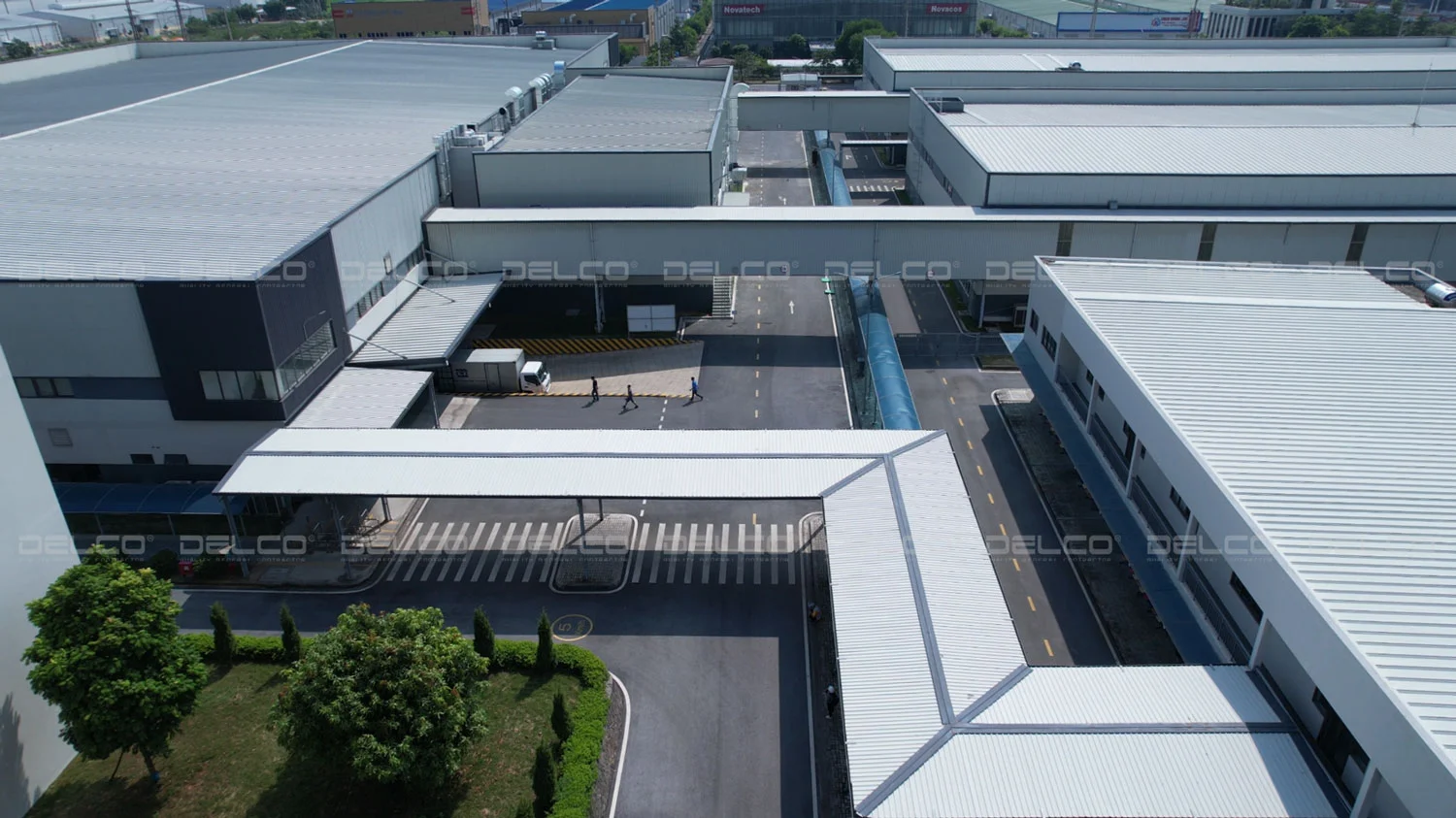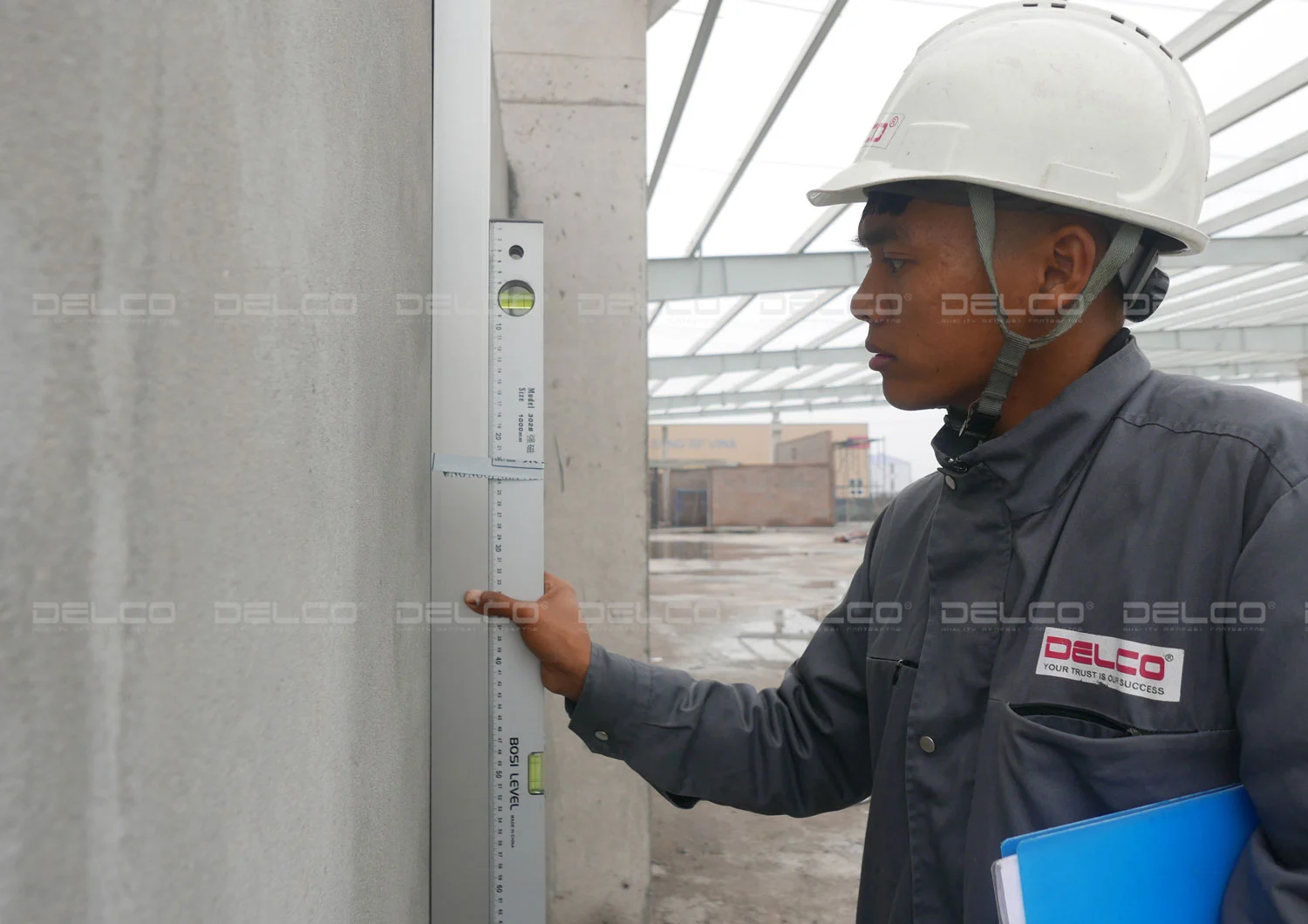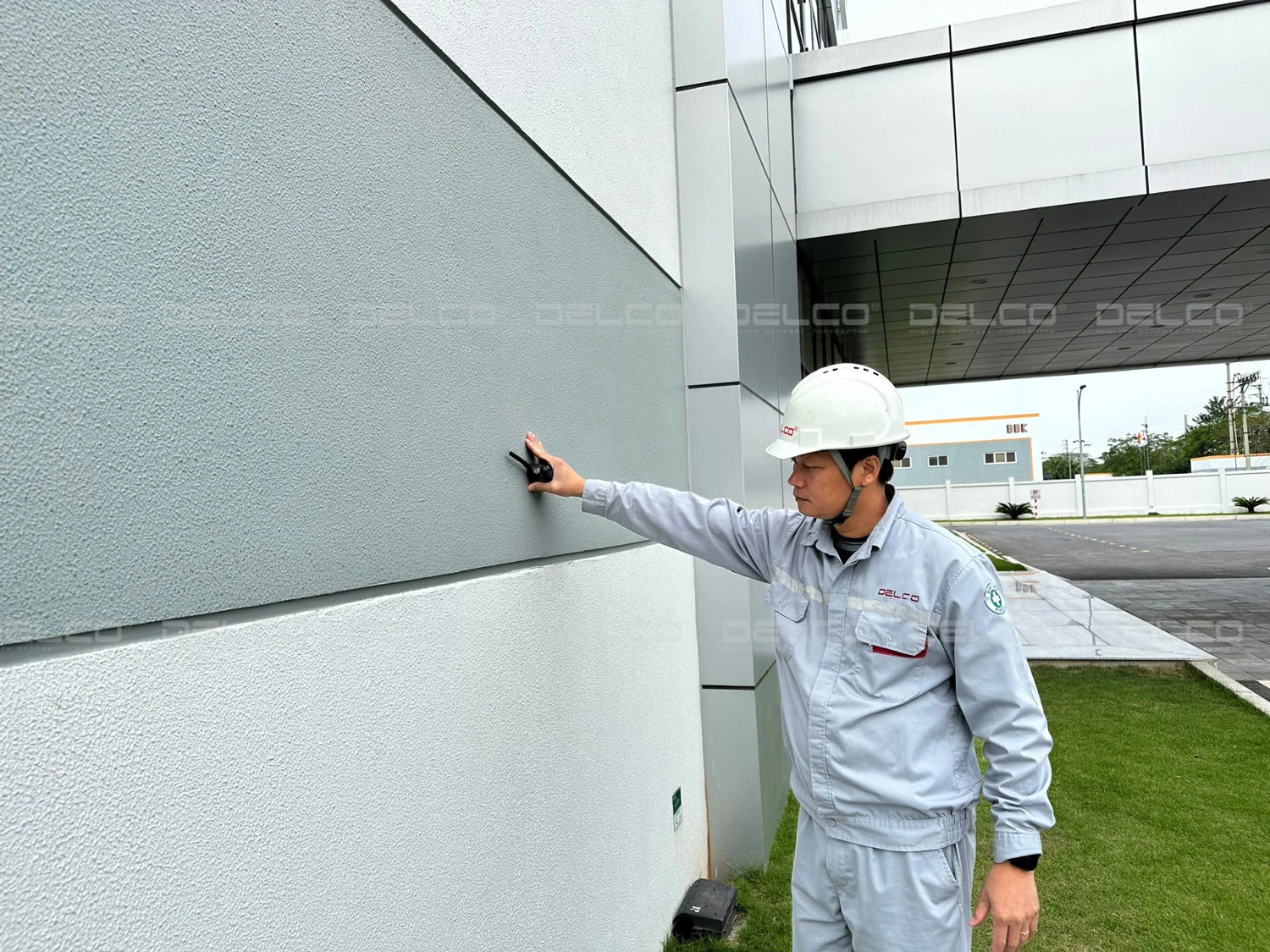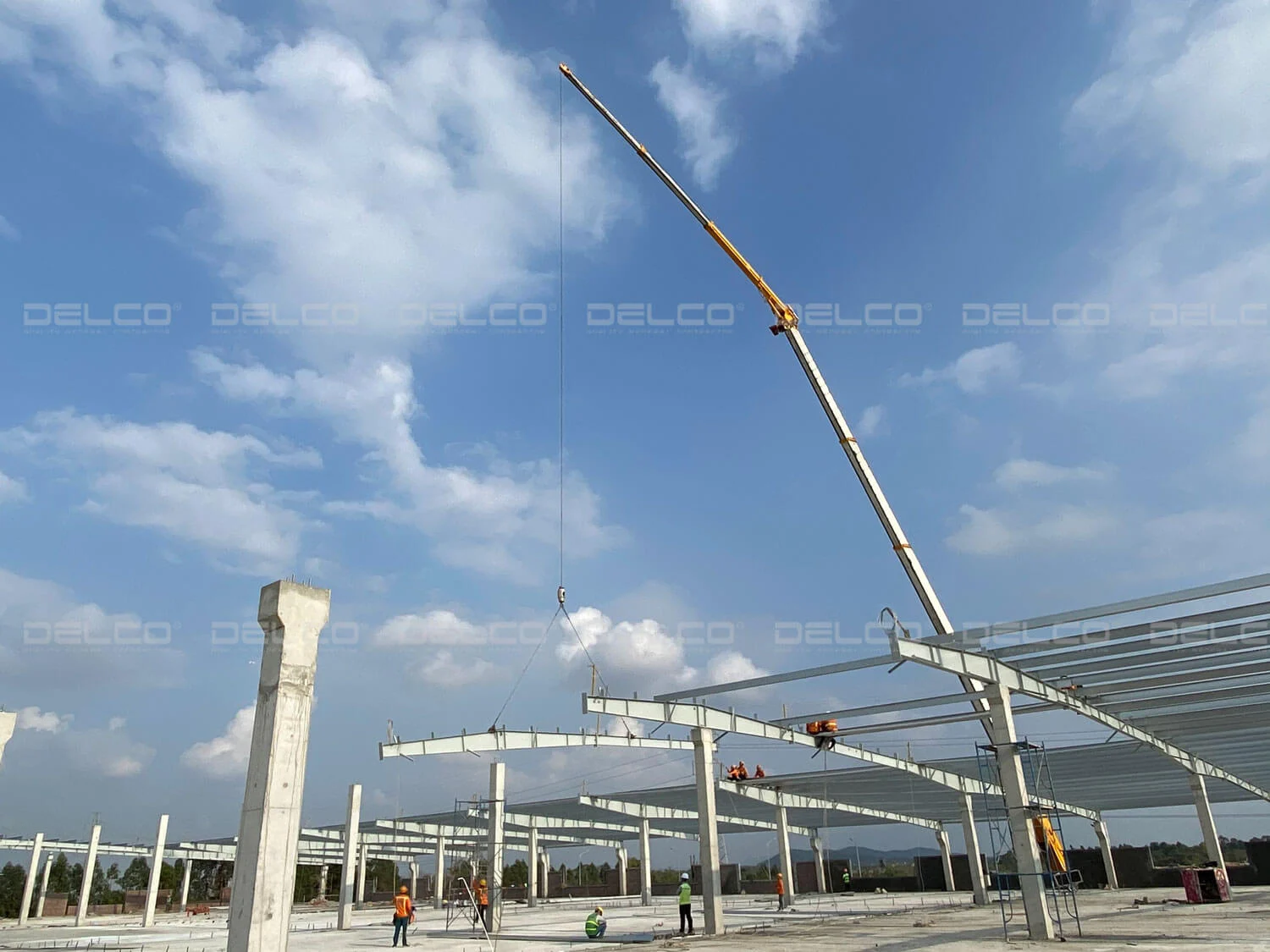Each HVAC system consists of different components, with unique designs and installation methods. Below is a description of the basic structure of an industrial HVAC system, highlighting the key equipment that helps meet the cooling, heating, and air conditioning needs.
The Role of the HVAC System in Factories
The HVAC system plays a crucial role in controlling temperature, humidity, and air quality, ensuring an efficient and safe working environment. There are various types of HVAC systems for factories that investors can choose from, including local air conditioning systems, central air conditioning systems, chiller systems, and ceiling-mounted air conditioners with ductwork. Each HVAC system consists of different components, designed and installed based on specific requirements. Below is a description of the basic structure of an HVAC system in factories, featuring important equipment to meet cooling, heating, and air conditioning needs.
What Does the HVAC System Include?
Outdoor Unit (Main Unit)
The outdoor unit is a key component in the HVAC system, responsible for adjusting the temperature and producing either cold or hot air, depending on the usage requirements. Most factories in Vietnam use single-function air conditioning systems, prioritizing the cooling feature due to the tropical hot and humid climate.
Conversely, in regions with temperate climates, investors may consider using two-way air conditioning systems. This type of air conditioner not only produces cold air but also generates hot air, helping to maintain a stable temperature for factories under varying weather conditions.
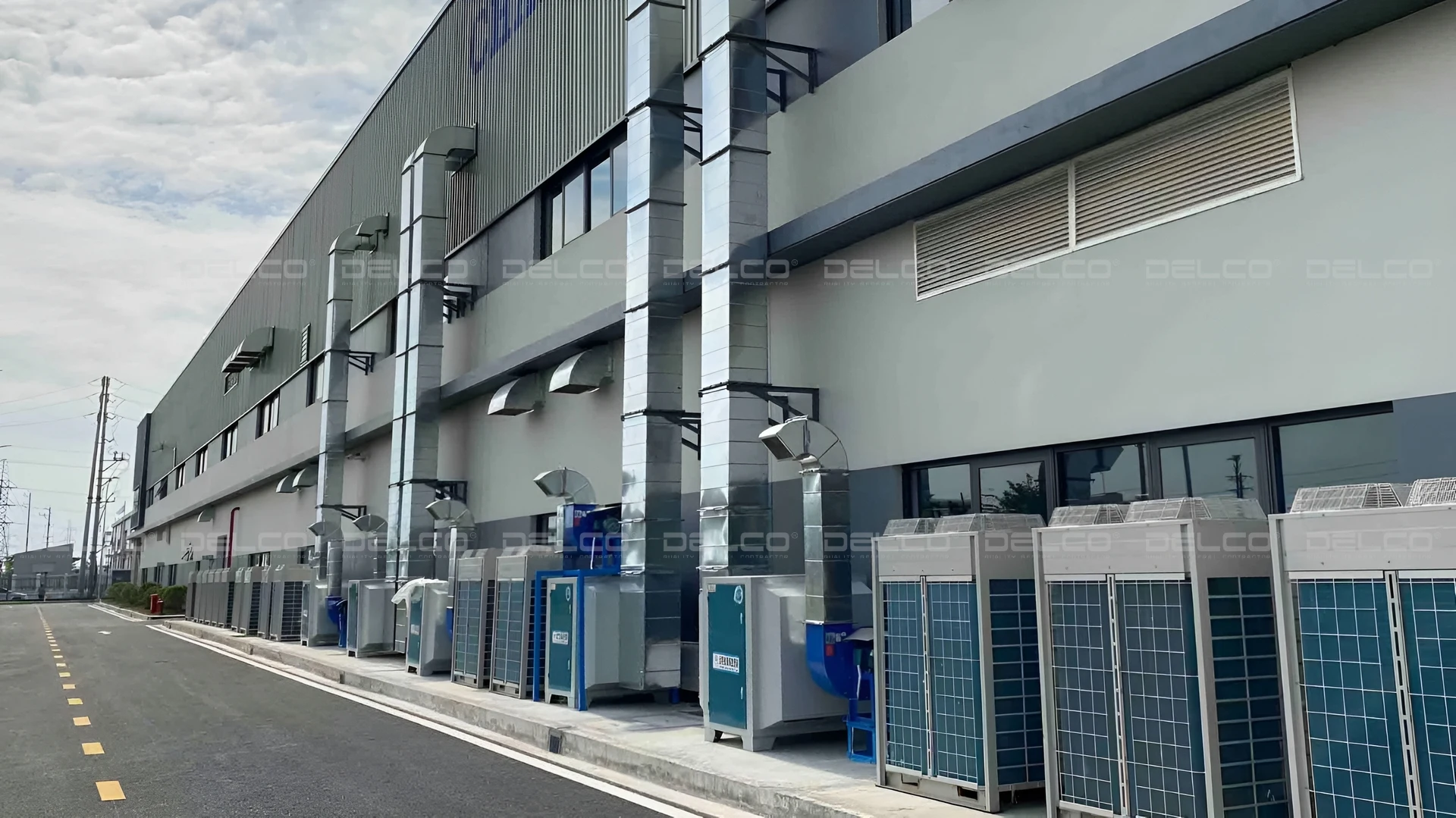
What does the HVAC system include? Outdoor Unit (Main Unit) – a key component of the HVAC system
Furnace
In colder climates, the heating feature of the air conditioning system is a primary concern for investors. It helps control the internal temperature of the factory, ensuring the health of workers and suitable conditions for production and product storage. Investors can choose two-way air conditioning systems with heating capabilities or use HVAC heating systems such as heaters or hot water boilers, depending on practical use, specific requirements, and budget.
Ductwork System
The ductwork system plays a vital role in distributing air to corresponding areas in the factory and is one of the main components of the factory HVAC system. There are two primary types of ducts:
Copper Ducts
Copper ducts are used to transfer refrigerant between the outdoor and indoor units, ensuring the HVAC system operates efficiently in cooling and temperature control. Proper installation following the standards and design of each corresponding HVAC system is necessary to ensure cooling efficiency, durability, and energy savings.
Air Ducts
Air ducts distribute air to specific areas within the factory. Industrial air ducts are often designed to ensure efficient airflow, allowing cool or warm air to be evenly distributed throughout the factory space. For large factories, the air duct system must be designed logically to avoid heat loss or energy waste.

Air duct system at Pham Nguyen Confectionery Factory Project, with DELCO Construction as the General Contractor – MEP Contractor
Terminal Unit
The terminal unit includes components such as supply and return air grilles, which help control and distribute air at appropriate temperatures and humidity to specific areas within the factory. The supply air grille allows temperature-regulated air to enter the workspace, while the return air grille collects old air for reprocessing.
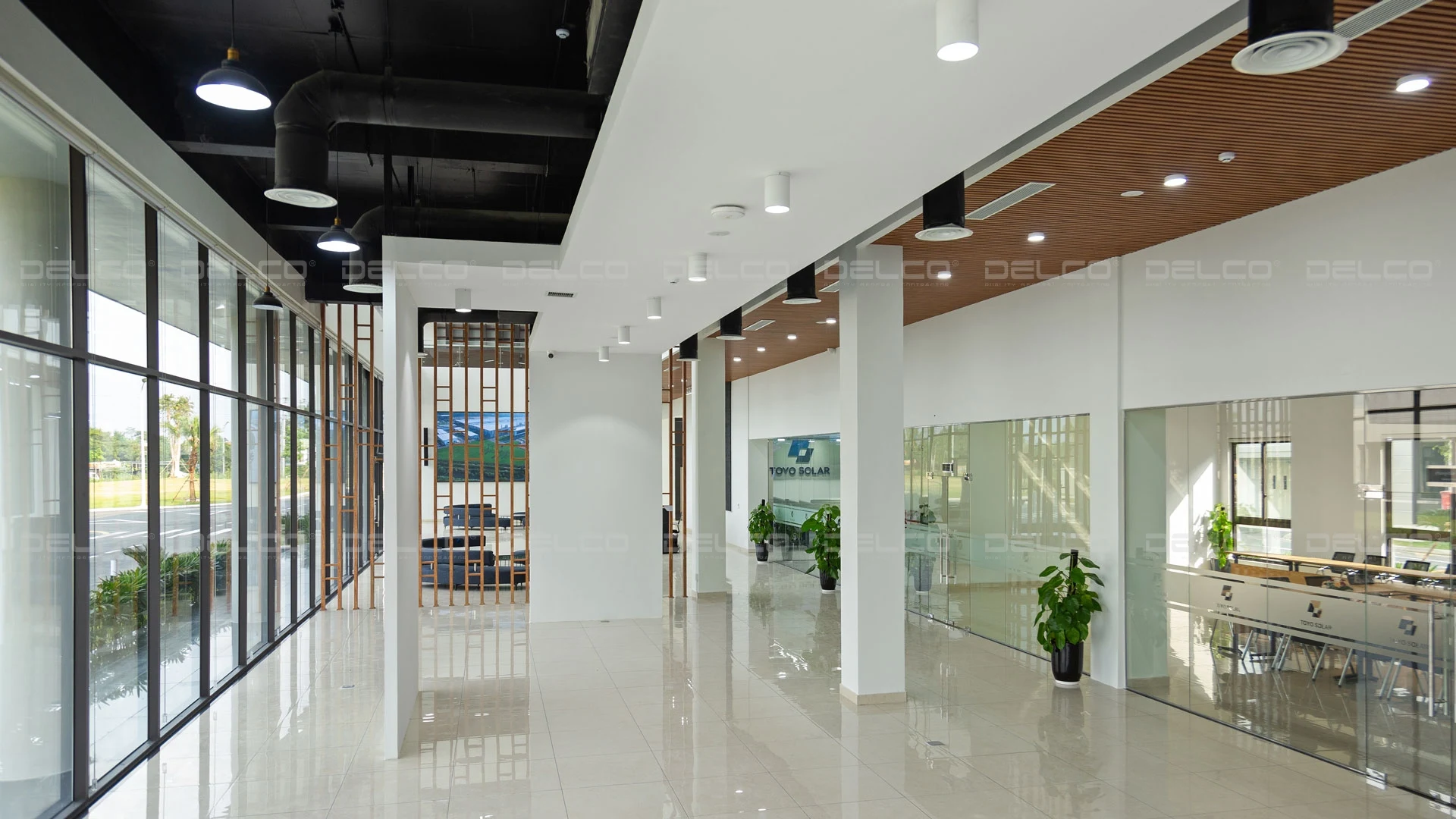
Supply and return air grilles designed in harmony with the factory interior. Image from Toyo Solar Factory Project in Phu Tho, with DELCO as the Design – Build contractor for factory office interior.
Air Handling Unit (AHU)
The AHU is not a mandatory component of the HVAC system in factories, but it is crucial for industries that require strict control over humidity and air cleanliness. The AHU’s role is to process air by regulating humidity, purifying the air, and controlling pressure before distributing it into the factory. It helps maintain air quality within the factory, which is particularly important for industries such as pharmaceuticals, food production, electronics manufacturing, and clean rooms.
Xem thêm: HVAC technology trends in Vietnam in 2024
Xem thêm: 7 key factors to consider during factory design


